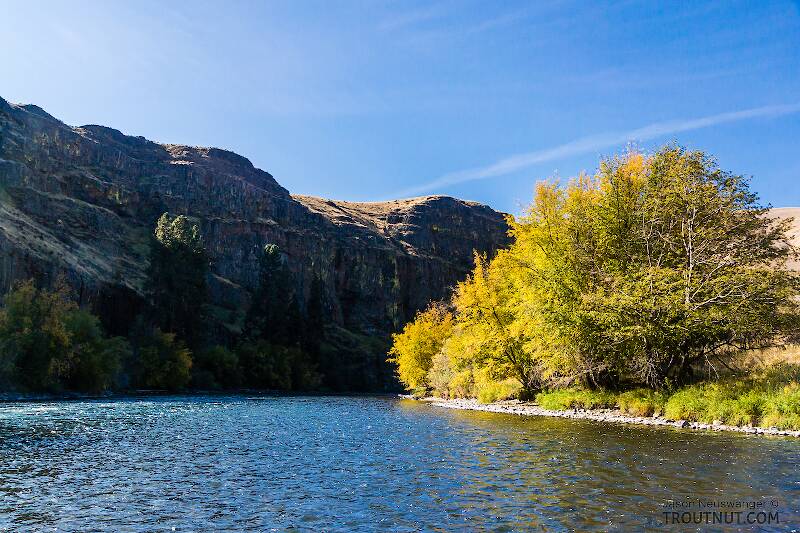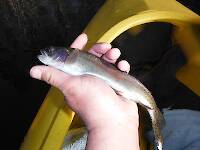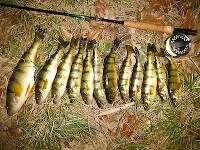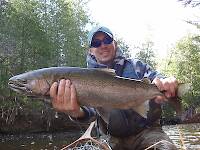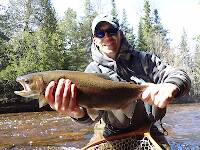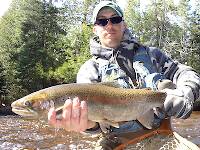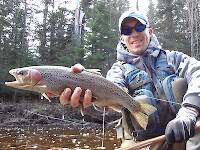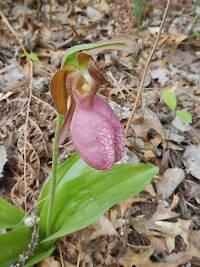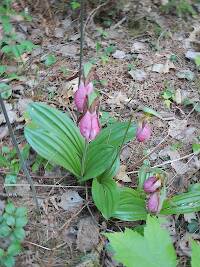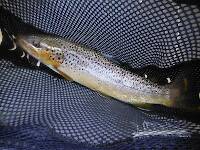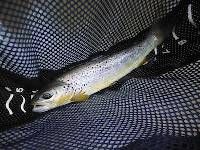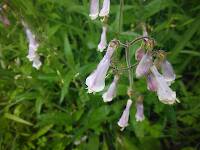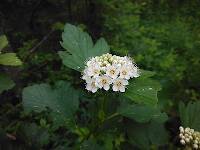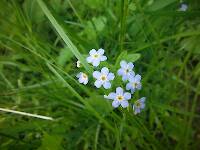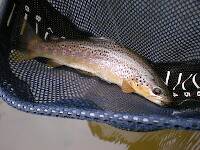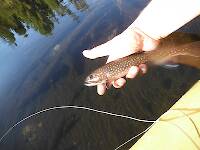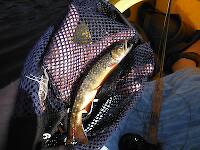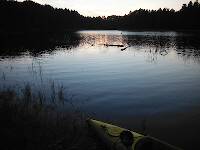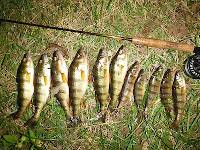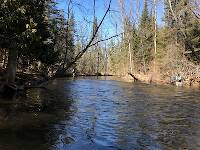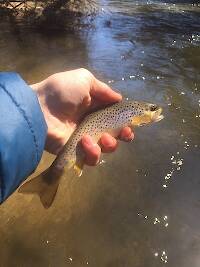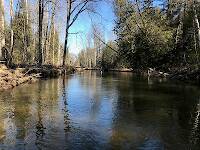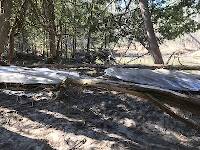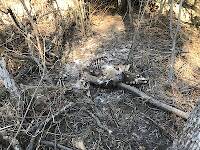
Blue-winged Olives
Baetis
Tiny Baetis mayflies are perhaps the most commonly encountered and imitated by anglers on all American trout streams due to their great abundance, widespread distribution, and trout-friendly emergence habits.
Featured on the forum

Troutnut is a project started in 2003 by salmonid ecologist Jason "Troutnut" Neuswanger to help anglers and
fly tyers unabashedly embrace the entomological side of the sport. Learn more about Troutnut or
support the project for an enhanced experience here.
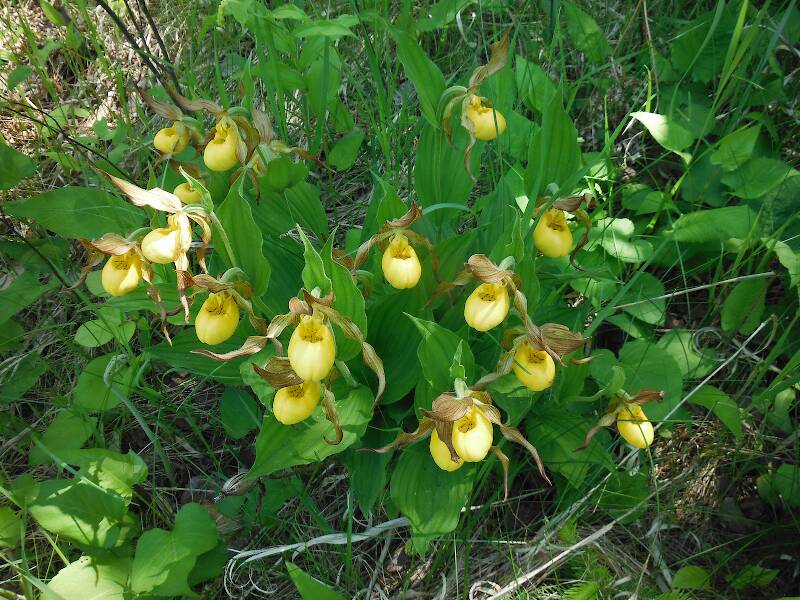
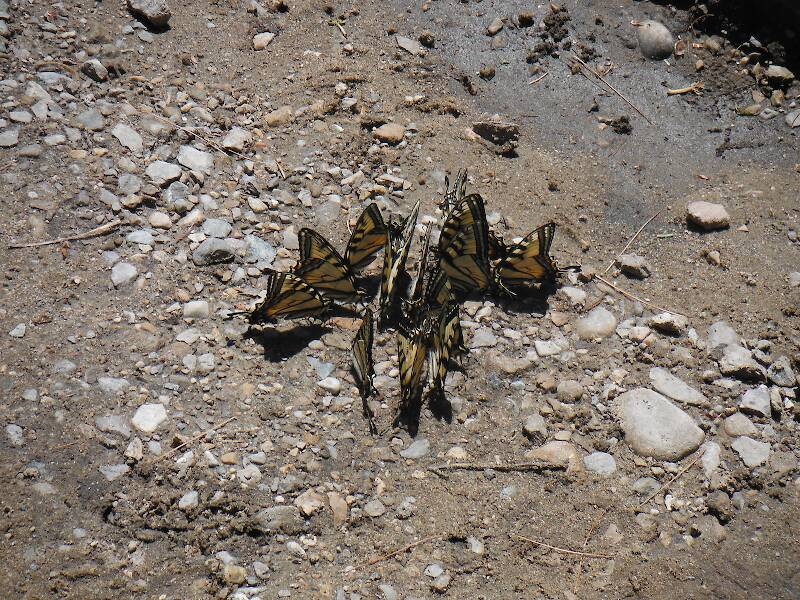
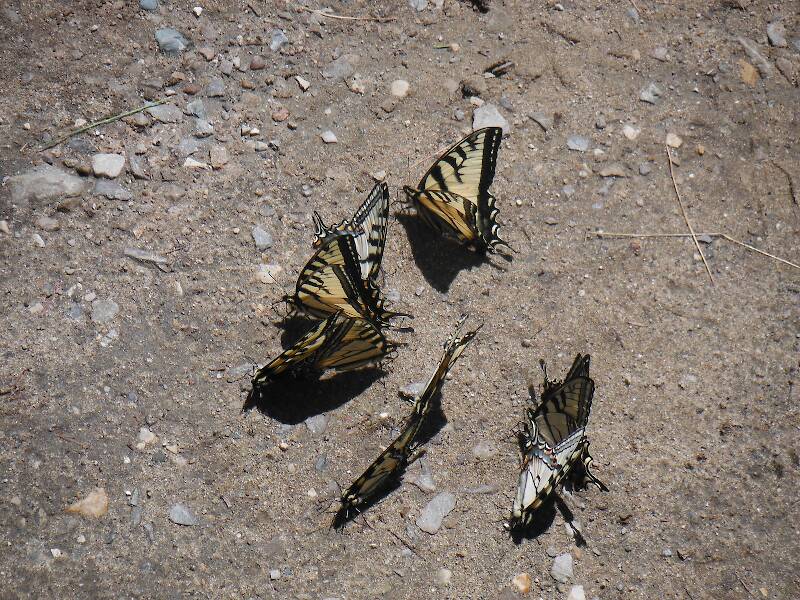
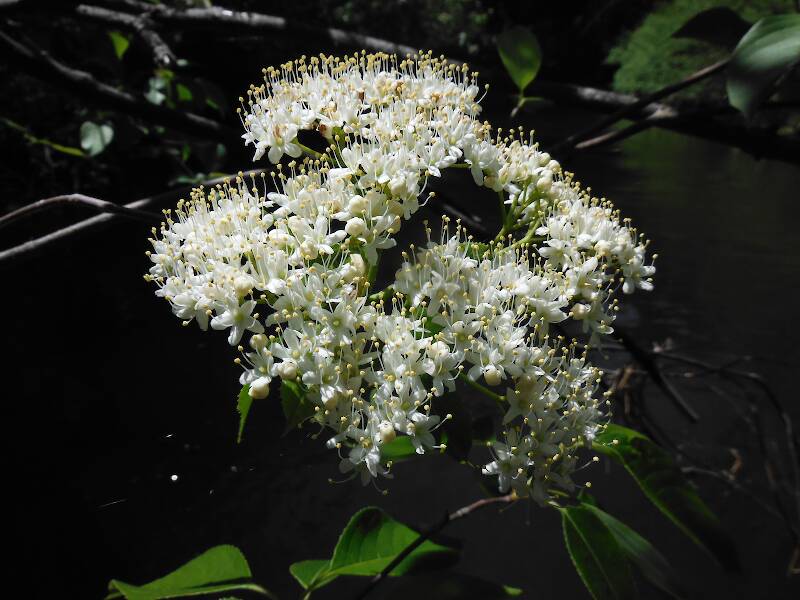



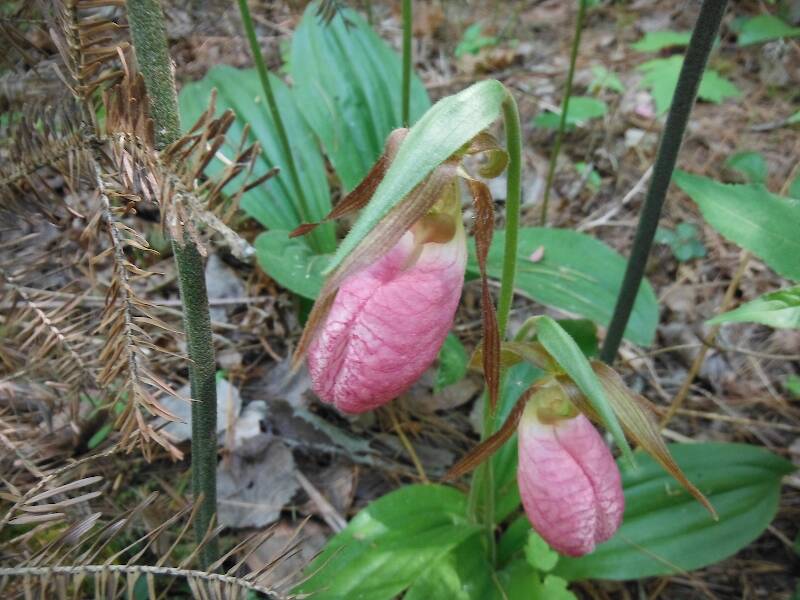
Jmd123 on Jun 5, 2014June 5th, 2014, 4:55 pm EDT
Headed out to the Rifle today for another afternoon fish, and by golly, this time there were mayflies! And a reasonable number of them too, and they sure looked like Red Quills. This late??? And no female Hendricksons in sight either, but the few fish that hit didn't care, including the one in the photo, the only fish I hooked all day. I was rather surprised not to see more fish feeding on top, given the number of bugs I was seeing, thinking the fish are just not yet into surface feeding mode. However, as I was not too far from the end of my reach, a kayak appeared heading downstream. I noticed a blue Volkswagen Beetle with a boat rack on top of it when I drove into the parking lot, and it turned out he paddled upstream through my fishing reach before coming back down...so much for the lack of rising! I finished up there with a small modicum of disgust and headed downstream to my other favorite spot on this river, but other than one solid hit that I missed and a few mayflies still hanging around it was quiet.
Still off to a slow start this year, haven't been on the water enough. It was, however, a beautiful day, with a big bunch of tiger swallowtail butterflies probing the mud along the banks in what are known as "mud puddle clubs". Haven't seen hardly any butterflies yet this year and here was probably thirty of them! Also, orchids were blooming nicely on the way to the river (the yellows) and on the hiking trail I take back down to my car (the pinks). Clouds of mosquitos and one or two deer flies were most unwelcome companions...
I'm gettin' there, things will improve as the season goes on, and it may be time for evening fishing to commence soon.
Jonathon
Still off to a slow start this year, haven't been on the water enough. It was, however, a beautiful day, with a big bunch of tiger swallowtail butterflies probing the mud along the banks in what are known as "mud puddle clubs". Haven't seen hardly any butterflies yet this year and here was probably thirty of them! Also, orchids were blooming nicely on the way to the river (the yellows) and on the hiking trail I take back down to my car (the pinks). Clouds of mosquitos and one or two deer flies were most unwelcome companions...
I'm gettin' there, things will improve as the season goes on, and it may be time for evening fishing to commence soon.
Jonathon
No matter how big the one you just caught is, there's always a bigger one out there somewhere...
Entoman on Jun 6, 2014June 6th, 2014, 4:02 am EDT
Hi Jon,
You're right in your suspicion. It's not E. subvaria nor is it male. It looks like a female Leptophlebia cupida imago. The Early Black Quills are this color as spinners but are curiously much darker as duns. The tiny terminal filament appears to be missing, but that is not unusual for this species as they are delicately attached. They are sometimes lost in molting, sometimes in other ways. Is there slow or boggy water nearby, perhaps even isolated from the main stem? It doesn't take much...
You're right in your suspicion. It's not E. subvaria nor is it male. It looks like a female Leptophlebia cupida imago. The Early Black Quills are this color as spinners but are curiously much darker as duns. The tiny terminal filament appears to be missing, but that is not unusual for this species as they are delicately attached. They are sometimes lost in molting, sometimes in other ways. Is there slow or boggy water nearby, perhaps even isolated from the main stem? It doesn't take much...
"It's not that I find fishing so important, it's just that I find all other endeavors of Man equally unimportant... And not nearly as much fun!" Robert Traver, Anatomy of a Fisherman
Jmd123 on Jun 6, 2014June 6th, 2014, 5:17 pm EDT
Hey Kurt, thanks for the identification, kind Sir. I don't think I've run into these guys before, and I saw lots of them today on the Pine. These are running about a #14 or so, and they bounce off the water quite frequently with vertical dives and rises. Don't know what was wrong with the Rifle, because today on the Pine there were lots of rises, albeit all little guys, and I caught little rainbows and one wee brookie all afternoon long on the closest things I could find in my box, those #12 Red Quills and when I ran out of them I pulled out some Isonychia dries I made a few years ago and practically never used. Do you have a good recipe for an imitation, kind Sir?
No photos of trout today because they were all so small, but the flowers were just spectacular so I did take plenty of pictures of those. The Pine is just such a pretty place to fish, even though they run small and the holes are few and far between, plus the driving distance is half the Rifle. And every now and then I get a nice one or two outta there...
Jonathon
No photos of trout today because they were all so small, but the flowers were just spectacular so I did take plenty of pictures of those. The Pine is just such a pretty place to fish, even though they run small and the holes are few and far between, plus the driving distance is half the Rifle. And every now and then I get a nice one or two outta there...
Jonathon
No matter how big the one you just caught is, there's always a bigger one out there somewhere...
Entoman on Jun 7, 2014June 7th, 2014, 4:01 pm EDT
You're welcome. RU sure that's what the fish were rising to? These spinners aren't known for offering much in the way of fishing opportunities. While your choice of nymphs isn't far off (they do look and behave more like swimmers than the ephemerellid crawlers they're usually associated with), by this time of year they are in the margins - often in puddles and bogs away from the stream. They hatch there and meet over the stream after molting for their ovipositing. They then go to die in the bushes, usually... Did you see many on the water?
"It's not that I find fishing so important, it's just that I find all other endeavors of Man equally unimportant... And not nearly as much fun!" Robert Traver, Anatomy of a Fisherman
Oldredbarn on Jun 8, 2014June 8th, 2014, 6:41 am EDT
Just got back from upper Au Sable...They were everywhere, mixed in with Drakes, a few Iso's, and the two sulphers.
Kurt...On the wing some up there were mistaking this one with the Iso's, including me...It was the mystery bug up there...I was too Drake-e-fied to pay attention and you are correct, not sure they were pulling up fish. My guide friend found some Iso's on our float and they have white legs and the tarsi are white...The White-Gloved Howdy deal.
Spence
Kurt...On the wing some up there were mistaking this one with the Iso's, including me...It was the mystery bug up there...I was too Drake-e-fied to pay attention and you are correct, not sure they were pulling up fish. My guide friend found some Iso's on our float and they have white legs and the tarsi are white...The White-Gloved Howdy deal.
Spence
"Even when my best efforts fail it's a satisfying challenge, and that, after all, is the essence of fly fishing." -Chauncy Lively
"Envy not the man who lives beside the river, but the man the river flows through." Joseph T Heywood
"Envy not the man who lives beside the river, but the man the river flows through." Joseph T Heywood
Quick Reply
Related Discussions
Topic
Replies
Last Reply
2
Nov 17, 2015
by Jmd123
by Jmd123
3
Mar 22, 2010
by Motrout
by Motrout
5
May 25, 2012
by Jmd123
by Jmd123
3
Sep 25, 2015
by Oldredbarn
by Oldredbarn

